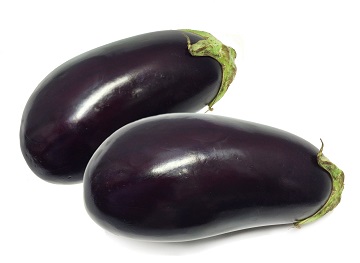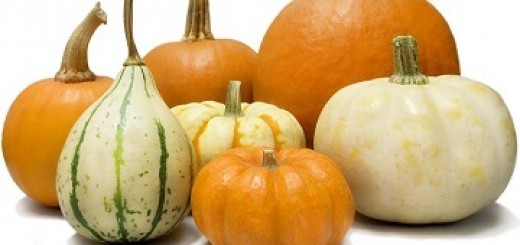Tips for Healthy Living: Autumn’s Aubergines

Geri Wohl, Certified Nutrition Consultant Better Eating Coach
Autumn’s Aubergines
By Geri Wohl, CNC
Aubergine. Brinjal. Baingan. Melanzana. For us in the US, we know it as eggplant. This vegetable is actually a berry. It derives its name from resembling a large pear-shaped egg. The globe eggplant has a deep purple skin with a cream-colored spongy flesh. Varieties of aubergine can be found in different colors, striations, sizes and shapes. Eggplant can have a bitter taste due to the edible seeds that contain a very small amount of nicotine. No need to be concerned as you would need to consume 20-40 pounds of eggplant to obtain the equivalent amount of nicotine found in one cigarette.
Eggplant originated in India around the 5th century. It was primarily used as a dye and a decorative garden plant more than as a food due to its acrid taste. Over time through cultivation, aubergine has become a more popular vegetable, both in Indian and Mediterranean dishes. It belongs to the nightshade family or Solanaceae, which includes tomatoes, sweet peppers, potatoes and paprika. In fact, the aubergine plant has very similar growth characteristics to tomato plants. Plants in the nightshade family may aggravate conditions such as arthritis or fibromyalgia. If you have questions about these conditions and nightshades, contact me at http://www.bettereatingcoach.com/.
Let’s look at the positive benefits from consuming eggplant. Eggplant is very low in calories. One cup has only 35 calories. While it isn’t loaded with one particular nutrient, it does possess many nutrients and antioxidants that provide overall nutritional support. For instance, it is high in dietary fiber, having about 10% of the daily value. Having a diet high in fiber keeps the digestive tract regular and may protect against type II diabetes. For more about fiber, see my article “It’s Good to be Green.” In addition, eggplant contains vitamins B1, B3, B6, K and folate. The minerals copper, manganese, magnesium and potassium are also found in eggplant.
Its deep purple color is an indication that it is rich in antioxidants. Its ORAC score is 993 units. For more about ORAC scores and antioxidants, see my article “Spice it up.” One of eggplant’s important antioxidants is an anthocyanin called nasunin that supports our brains. Nasunin, found in the eggplant skin, has been shown to help protect the fats comprising the cell membranes of the brain. By protecting these cell membranes, needed nutrients can pass into the cell and the cellular waste products exit and are excreted. As with other antioxidants, nasunin is associated with reducing cancer growth. In the Journal of Agricultural and Food Chemistry, nasunin was found to prevent growth of new blood vessels in cancer tumors, an important step in the prevention of tumor growth.
Nasunin is also an iron chelator meaning that it will bind excess iron from the body. Iron is essential for oxygen transport, normal immune functioning and collagen formation, but excess iron generates free radicals and is associated with heart disease and cancer. By protecting free radical formation, nasunin effectively protects the blood cholesterol from being oxidized. Other antioxidants found in eggplant also work on lowering LDL cholesterol. Vitamin K is known to help prevent clot formation and strengthen capillaries allowing for better blood flow throughout the body. These antioxidants and vitamin K work synergistically to support cardiovascular health.
Eggplants are typically in season from the end of summer through the middle of fall. So get yours now before the local season ends. When selecting, the skin should be shiny and free of any blemishes or discoloration. To test for ripeness, gently press the skin with your thumb. If it springs back, the eggplant is ripe. If it leaves an indentation, avoid buying it. Eggplants are very perishable. Store in the refrigerator for a few days. Once eggplant is cut, it will decompose quickly.
To reduce the bitter taste, some people will tenderize eggplant by salting it. Sprinkle cut eggplant pieces with salt and let them sit in a colander for 30 min. The salt will pull some of the water content with the bitter eggplant components out. If you are on a low salt diet, you can rinse off the salt with water. Eggplant can be baked, roasted, sautéed or stewed. For a delicious eggplant spread, see my Eggplant Spread recipe.
Be aware that eggplants also contain oxalates. Oxalates can crystallize and accumulate causing kidney or gallbladder stones. Oxalates can also interfere with calcium absorption.
Here’s to our purple friend—try it and get the benefits to both your head and heart!
© Geri Wohl, CNC












